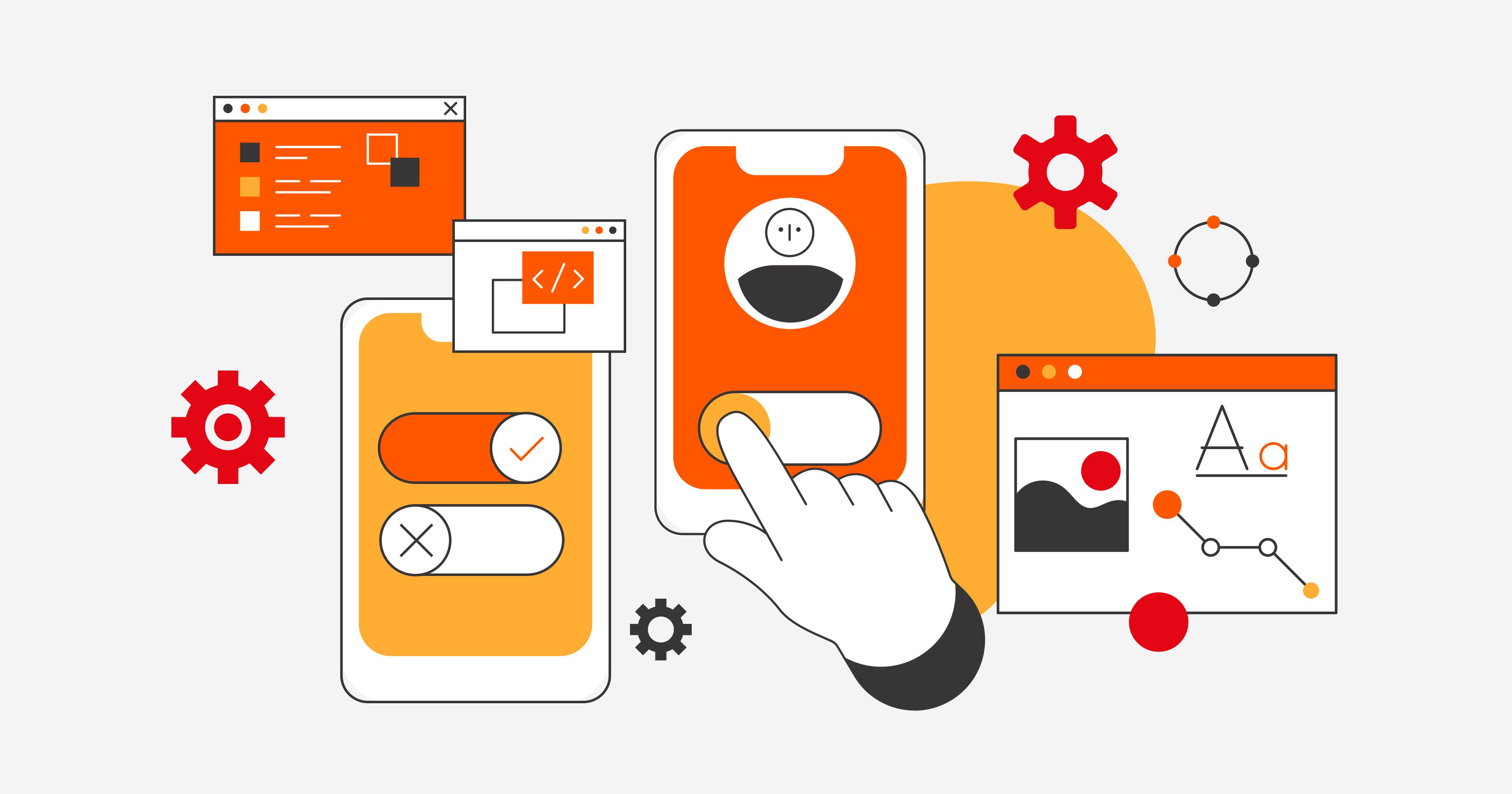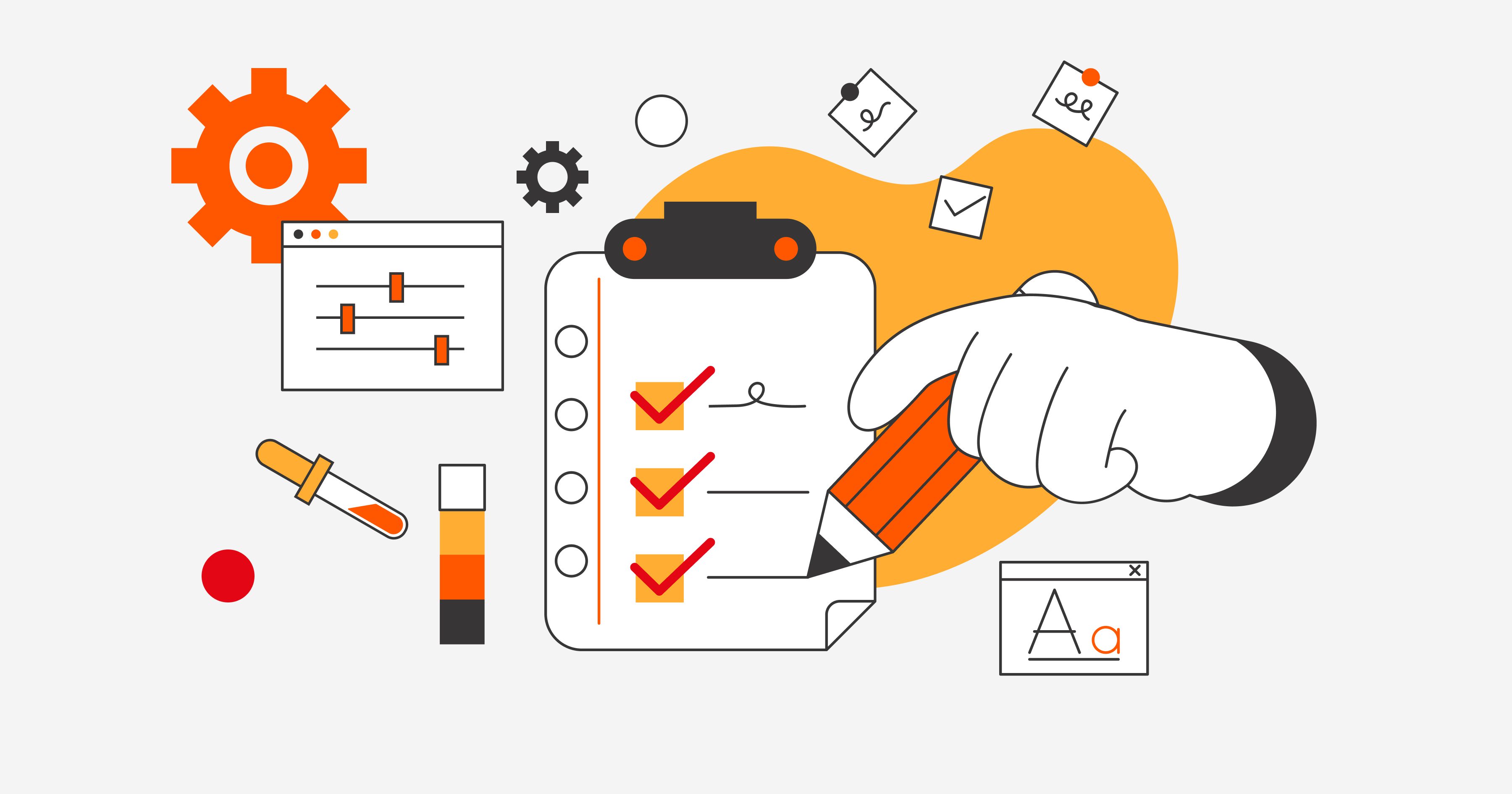Challenges Faced by Users with Disabilities
Key Principles of Accessible Design
Design Approaches for Inclusive User Experiences
Methods for Testing Accessibility Features
Thank you for reaching out to Sigma Software!
Please fill the form below. Our team will contact you shortly.
Sigma Software has offices in multiple locations in Europe, Northern America, Asia, and Latin America.

USA

Sweden

Germany

Canada

Israel

Singapore

UAE

Australia

Austria

Ukraine

Poland

Argentina

Brazil

Bulgaria

Colombia

Czech Republic

Hungary

Mexico

Portugal

Romania

Uzbekistan
In the current climate, healthcare applications are regarded as invaluable tools for managing one’s health and accessing information on specific conditions. However, for users with disabilities, navigating these apps can present a significant challenge due to a range of accessibility issues. This article aims to address the topic of accessibility in healthcare applications, exploring the importance of considering users with disabilities, the challenges they encounter, and key guidelines and strategies for enhancing accessibility.
Challenges Faced by Users with Disabilities
Key Principles of Accessible Design
Design Approaches for Inclusive User Experiences
Methods for Testing Accessibility Features
Accessibility is a key factor in enabling disabled users to utilize healthcare applications independently, thereby facilitating their access to essential healthcare services. These applications are beneficial for the management of chronic diseases, viewing medical records, making appointments, and obtaining updated information about medications and treatments. The absence of accessibility features creates obstacles for disabled individuals in obtaining pertinent healthcare information ultimately leading to healthcare inequality.

It is not sufficient to view diversity as a mere added convenience: rather, it must be regarded as a fundamental principle of equality ensuring that disabled users have access to their preferred healthcare facilities. In this way, the presentation of inclusive healthcare apps enables patients with disabilities to be independent and engage in the planning and processes of their medical treatment. Inclusive design ensures the independence, privacy, and access to health services of all users, in line with the principles of health equity.
Users with disabilities face significant obstacles when using healthcare apps, which further exacerbates existing disparities in access to healthcare services. These challenges include:
The concept of accessible design is based on a number of core principles that aim to make digital goods and services as usable for people with disabilities as they are for the rest of the population. Incorporating these principles into the development of healthcare applications also makes it easier to make them accessible to as many people as possible while promoting an all-inclusive user interface. Here are the key principles:
Make the content multi-sensory so that it can be accessed and used by as many target users as possible. This includes providing other means of accessibility such as text transcripts for audio and video, and captions for video.
This means that all information displayed and all user interface controls should be accessible and usable by a user regardless of sensory impairment. Label form fields and all interactive objects with concise and descriptive terms.
Design interfaces and functionality that are easy to use with a variety of input methods, including keyboard navigation, voice commands, and gestures. Ensure that users can interact with all elements without relying solely on mouse-based interactions.
Avoid time-based or motion-dependent content that may present challenges for users with mobility or dexterity impairments. Provide options for users to adjust the timing of interactive elements or animations.
Create interfaces that are intuitive and easy to understand, minimizing cognitive load and confusion for users with cognitive or learning disabilities. Use consistent navigation patterns, clear language, and familiar interface conventions.
Provide contextual help and guidance throughout the application to help users understand complex tasks or processes. Use tooltips, error messages, and explanatory text to clarify expectations and actions.
Develop applications based on robust and interoperable technologies to ensure compatibility with a wide range of assistive technologies and devices. Adhere to established accessibility standards such as the Web Content Accessibility Guidelines (WCAG) to promote consistency and interoperability.
Regularly update and maintain the app to meet evolving accessibility requirements and technological advances. Test the app across platforms, browsers, and assistive technologies to ensure continued compatibility and usability.
Creating inclusive user experiences in healthcare apps requires a thoughtful and intentional approach that takes into account the diverse needs and abilities of users with disabilities. By incorporating specific design approaches, developers can ensure that their apps are accessible to all users, regardless of disability. Here are several design approaches to promote inclusivity:
Prioritize the needs and preferences of users with disabilities throughout the design process. Conduct user research, including interviews, surveys, and usability testing to understand the challenges they face and identify opportunities for improvement.

Involve people with disabilities as active participants in the design process, soliciting their feedback and input at various stages of custom application development. Incorporating different perspectives ensures that the application effectively meets the needs of its intended users effectively.
Aim for simplicity in interface design, focusing on clarity, consistency, and ease of use. Streamline navigation paths and minimize visual clutter to reduce cognitive load and improve usability for users with cognitive impairments.
Use clear and intuitive iconography, labels, and visual cues to communicate functionality and guide users through the app. Avoid overly complex layouts or design elements that may confuse or overwhelm users.

Healthcare design is all about making sense of large amounts of data. This involves collecting patient details, medical histories, test results, and treatment plans, and then transforming them into easy-to-understand visuals such as charts and graphs. These visuals help identify disease trends, treatment effectiveness, and resource allocation.
Visuals aren’t just pictures—they’re tools for spotting patterns and outliers. Techniques such as heat maps and trend lines help pinpoint important information to inform decisions about patient care and public health strategies.
Provide users with customizable settings and preferences to tailor the app to their individual needs and preferences. Allow users to adjust font sizes, color schemes, contrast levels and other interface elements to accommodate visual, cognitive or motor impairments.

Allow users to configure input methods and interaction modes based on their abilities and preferences. Support alternative input devices, keyboard shortcuts and voice commands to ensure accessibility for users with motor impairments.
Optimize content presentation for accessibility by ensuring compatibility with assistive technologies such as screen readers, Braille displays and speech-to-text software. Provide alternative descriptive text for images, transcripts for audio, and captions for video.

Use semantic HTML markup and ARIA (Accessible Rich Internet Applications) roles and attributes to improve the accessibility of interactive elements and dynamic content. Ensure that all content is accessible and usable across different devices and platforms.
Integrate accessibility testing into the development process to proactively identify and address accessibility barriers. Use automated testing tools, manual audits, and user testing with people with disabilities to evaluate the accessibility features of the application.

Conduct regular accessibility audits and evaluations to assess compliance with accessibility standards and guidelines, such as WCAG. Address any identified issues promptly and iteratively improve the accessibility of the application over time.
Ensuring the accessibility of healthcare apps requires thorough testing to identify and address potential barriers that may prevent users with disabilities from using the app effectively. By using a variety of testing methods, developers can comprehensively evaluate the accessibility features of the app and iteratively improve its usability for all users. Here are several methods for testing accessibility features:
Use automated accessibility testing tools and software to perform initial scans of the app’s codebase and user interface. These tools can identify common accessibility issues, such as missing alt text for images, incorrect HTML markup, and insufficient color contrast.
Incorporate accessibility testing plug-ins and browser extensions into the development workflow to perform real-time accessibility checks during the design and development phases. These tools provide immediate feedback and suggestions for improving accessibility.
Conduct manual accessibility testing by navigating through the app using assistive technologies such as screen readers, voice commands and keyboard navigation. This hands-on approach allows testers to experience the app from the perspective of users with disabilities and identify potential usability challenges.
Test the application across devices, operating systems, and web browsers to ensure compatibility and consistency of accessibility features. Pay particular attention to platform-specific accessibility APIs and guidelines to address device-specific accessibility requirements.
Involve people with disabilities as beta testers or participants in usability testing sessions to gather first-hand feedback on the accessibility and usability of the application. Provide users with a range of disabilities, including visual, hearing, motor and cognitive impairments, with specific tasks to complete within the app.
Observe users’ interactions with the app and solicit their feedback on accessibility barriers, usability issues and areas for improvement. Incorporate user feedback into the iterative design and development process to iteratively improve the accessibility features of the application.
Evaluate the application’s compliance with established accessibility standards and guidelines, such as the Web Content Accessibility Guidelines (WCAG) and the Accessible Rich Internet Applications (ARIA) specification. Use accessibility checklists and compliance matrices to assess the application’s adherence to specific accessibility criteria.
Conduct manual audits and reviews to ensure that the app meets the criteria outlined in accessibility standards and guidelines. Address any identified issues or non-compliance with accessibility requirements to ensure that the app is accessible to users with disabilities.
Implement mechanisms for continuous monitoring and maintenance of accessibility features throughout the lifecycle of the application. Regularly review and update the applications’s accessibility documentation, including accessibility statements, user guides and support resources.

Need professional help with building a healthcare mobile app?
Find out about our custom healthcare software development services
Monitor user feedback and analytics data to identify emerging accessibility issues and trends. Proactively address user-reported accessibility barriers and prioritize accessibility improvements based on user needs and usage patterns.
1. Color Considerations:
2. Visibility Optimization:
3. Focus Management:
4. Content Optimization:
5. Touch and Gesture Perfection:
6. Seamless Navigation and Scrolling:
7. Simplified Data Input:
Accessibility is a fundamental aspect of healthcare app design, ensuring that users with disabilities can access essential healthcare services with ease and dignity. By prioritizing inclusivity and adhering to key principles of accessible design, developers can create healthcare apps that empower all users to manage their health effectively. Through continuous testing and improvement, we can work towards a future where healthcare technology is truly accessible to everyone, regardless of ability.

Andrii's expertise primarily encompasses the Healthcare industry. Bolstered by extensive knowledge in the Information Security domain and ML/AI. Andrii Pastushok is committed to guaranteeing clients receive an exceptional product development experience.
Linkedin profileChallenges Faced by Users with Disabilities
Key Principles of Accessible Design
Design Approaches for Inclusive User Experiences
Methods for Testing Accessibility Features


On November 27, in Lviv, Forbes AI Summit brought together entrepreneurs, technology leaders, and scientists for an honest conversation about how AI is reshapin...

The EU Data Act went live in September 2025. Its rollout across Europe has been uneven, with only a few member states having completed the national set-ups. Nev...

For years, manufacturers have been talking about the advantages of shifting to outcome-based business models. The rise of AI has made the opportunity for transf...
Would you like to view the site in German?
Switch to German